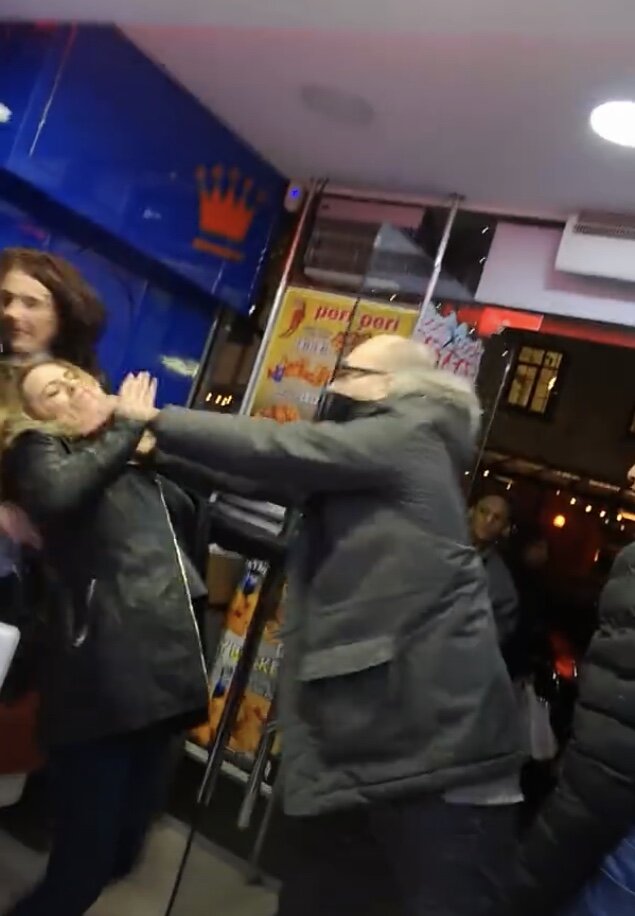Why did the Chicken cross the road?
The Cock-Pit
2019/2020
Today chicken is not an animal, but an economical food product. What lies behind and ahead such a cheap meal?
I elaborated a palette of colours made out of chicken’s scraps: Black Burned Bones, Rooster Sienna Blood, Eggshell Complexion, Livorno White. Mixing these pigments with the egg yolk I realized an Organic Chicken Tempera. Chicken shops in London are open almost all night long. It’s quite common for these places to be crowded with non-lucid people. In that kind of situation arguments and bad manners are often the rule, and it’s easy to witness brawls. In my view there is a very strong connection between the violence into chicken shops and the mistreatment of poultry raised into farm-factories in order to become a cheap food product. The combination between the low price of chicken’s meat and our society need to consume a gargantuan amount of meat leads to unexpected problems:
“Chicken shop ‘drug gangs recruiting children with promise of free food, parliamentary investigation finds’’.
Sky News UK online; 12 August 2019
“[...] The Home Office has been criticized by opposition MPs over a scheme to send hundreds of thousands of chicken boxes branded with #knifefree to chicken shops in an effort to dissuade young people from carrying the weapons [...] Boris Johnson has already called black people ‘piccaninnies with water melon smiles’. Now his government is pushing the stereotype that black people love fried chicken[...]’’
The Guardian online; August 14th 2019
The Cock-Pit aims to create a physical connection between farm factory, violence in chicken shops and advertisements, painting images of brawls, fights and commercials using the blood and the bones of the chicken.
This project is a reflection on the Consumer Society.
Still from: Fight in Pepes Blackburn, Youtube min 0:49; Private Archive; 2020
Peri Peri 2020; Organic Chicken Tempera on canvas; 30 x 20 cm
Kids Deal 2020; Organic Chicken Tempera on canvas; 25 x 25 cm
Caution Wet Floor 2019; Organic Chicken Tempera on canvas; 30 x 25 cm
Chicken Little 2020; Organic Chicken Tempera on eggshell and egg white Mortar; 4.0 x 4.0 cm

Chickens Wall Paper Exhibition view; Organic Chicken Tempera on paper; 150x100cm; 2020

Chickens Wall Paper detail; Organic Chicken Tempera on paper; 150x100cm; 2020

Chickens Wall Paper detail; Organic Chicken Tempera on paper; 150x100cm; 2020
Still from KFC WWE Rudolph Zigler commercial 2016; Google Images
The Imitators 2019; Organic Chicken Tempera on canvas; 30 x 25 cm
Ugo Exhibition view 2020; Organic Chicken Tempera on eggshell and egg white mortar; 11 x 15 cm
Foghorn Leghon loves chicks 2020; Organic Chicken Tempera on paper; 20 x 30 cm
Walking on the eggshells
2019/2020
When I started my research on chicken, I considered the egg topic less dramatic than the meat problem. There are actually aspects of the egg factory farm that are worse than those of the meat factory farm. For example: what happens to male chicks that do not serve to the factory?
Actually, anyway after the laying hens are literally squeezed for one or two years, they are sent to the slaughterhouse. Where can this meat be found and for what prize?
Chicken Bites 2; eggshell and egg white mosaic on wood; 15 x 12 cm
Eggshells; Private Archive; London 2019
Chicken Bites; Private Archive; London 2019
To get to the other side
2020/ ongoing
My project focuses on chicken’s feet because it is a part of the animal that the western consumer does not want to see. In the Western Culture, chicken’s feet are unlikely to be sponsored as a food. While I was working on them, I realized how many people find them disgusting and horrible to look at.
Those animal legs are one of the physical evidences that what we are going to eat was alive. Do legs represent the guilt of the consumer, who is used to see only the most cooked and succulent parts of the chicken? In my view advertisements are like beautiful lawyers, which have to defend drug dealers, rapists, exploiters and any other kind of abuse on nature, animals and people. Because of this I wanted to work on such a ‘’disgusting’’ product, because it is the hidden, dirtiest part of a widely beloved animal-food- product.
Chicken’s feet skin, tanned whit black tea, becomes similar to piton skin, or to a tiny crocodile skin.
To inspire the shape that I would like to give to my project, it was a KFC advertisement that recites: ‘’...Welcome to Chicken Town [...] Welcome to the Wild West...’’
Harland Sanders, Colonel of the KFC did not invent fried chicken, but certainly the myth of fried chicken started in US, in African-American slaves’ culture, who cooked it on rare holidays.
Since very ancient times, the boot has represented a social Western status. Lords wore boots. The same Gentlemen who could afford a horse, with whom they would most likely have gone to war to gain more fame, fortune, raw materials, slaves.
The Cow-Boy Boot is marked by a strong symbolism, surely not detached from the idea of adventure, violence, conquest and racism.
My project aims to combine a ‘’not beloved food product’’ and the Cow-Boy Boot shape, to create a conceptual and physical relation between different daily problems of the society where we live: economic problems, racism, explanation of planet resources, recycling, and a reflection on our History.
‘’Why did the chicken cross the road?’’ is an English word pun that ends with: ‘’To get to the other side’’ but does not rule out any other type of answer. Beside the connection between walking and boots, I find very interesting the underlying question: ‘’why did this happened?’’. Reflecting on the underlying causes of the problems is always the first step towards solving them.















